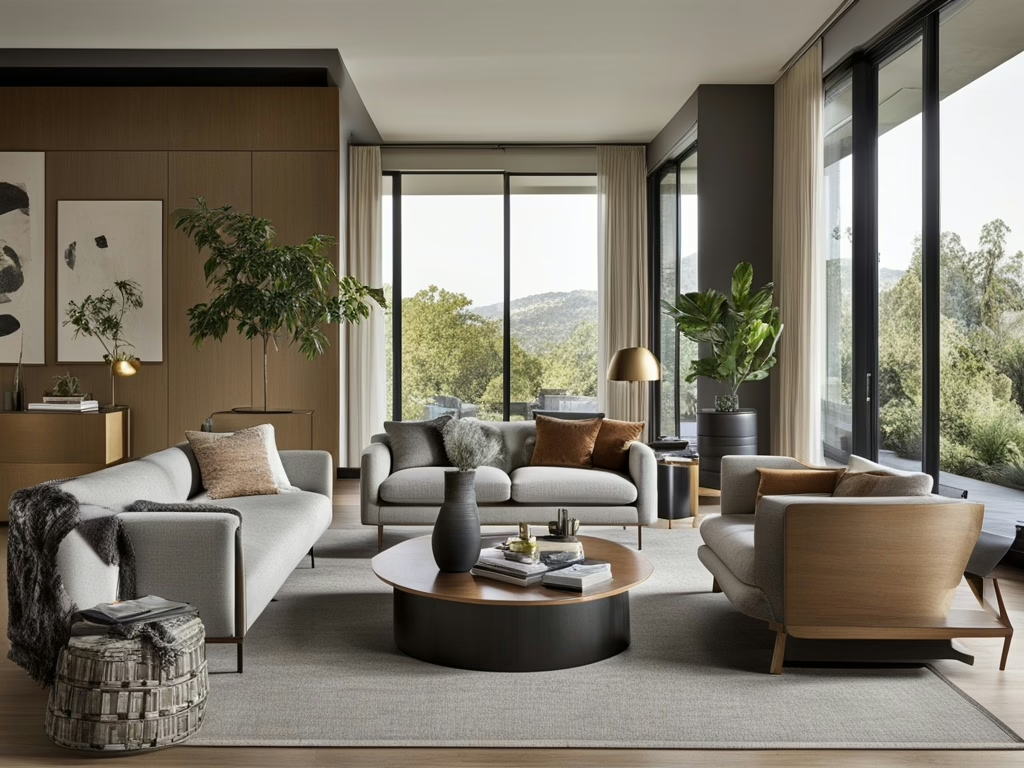
The terms contemporary and modern style are often used interchangeably, but they refer to distinct design movements. If you’re planning an interior design project, understanding the differences between contemporary vs. modern style will help you create a space that aligns with your aesthetic preferences.
In this guide, we’ll break down what defines modern vs. contemporary design, their key characteristics, and how to incorporate both styles into your home.
What Is Modern Style?
Modern interior design emerged in the early to mid-20th century, influenced by the Bauhaus and Mid-Century Modern movements. It focuses on simplicity, clean lines, and functionality with an emphasis on minimalism.
Characteristics of Modern Style:
- Neutral color palettes – Whites, grays, browns, and blacks dominate.
- Clean lines and geometric shapes – Straight edges, rectangular furniture, and open layouts.
- Minimalist approach – Uncluttered spaces with functional decor.
- Natural materials – Wood, leather, stone, and steel.
- Open floor plans – Integrated living, dining, and kitchen areas.
Common Modern Style Elements:
- Mid-century modern furniture with tapered legs.
- Floor-to-ceiling windows to maximize natural light.
- Sleek, unadorned cabinets and surfaces.
Modern design is timeless, focusing on practicality and simplicity rather than trends.
What Is Contemporary Style?
Contemporary design refers to what is trending now. Unlike modern design, which has fixed principles, contemporary style evolves based on current preferences and influences.
Characteristics of Contemporary Style:
- Flexible and ever-changing – Reflects current design trends.
- Mix of materials – Combines wood, glass, metal, and textiles.
- Bold contrasts – Often blends light and dark color palettes.
- Curved and organic shapes – Softer furniture designs compared to modern styles.
- Eclectic influences – Draws inspiration from multiple design movements.
Common Contemporary Style Elements:
- Statement lighting fixtures like sculptural pendants.
- Open layouts with multi-functional furniture.
- Use of sustainable and eco-friendly materials.
Because contemporary design constantly evolves, it allows for more creative freedom compared to modern style.
Key Differences: Contemporary vs. Modern Style
| Feature | Modern Style (Mid-20th Century) | Contemporary Style (Present Day) |
|---|---|---|
| Time Period | 1920s-1970s | 21st century, always evolving |
| Color Palette | Neutral, earthy tones | Mix of neutral and bold accents |
| Lines & Shapes | Straight, geometric | Soft, curved, and organic |
| Furniture | Low-profile, sleek | A mix of styles and materials |
| Materials | Wood, leather, metal | Glass, mixed metals, sustainable textiles |
| Decor | Minimal and functional | Artistic and expressive |
Both modern and contemporary designs prioritize clean, open spaces, but modern style adheres to fixed design rules, while contemporary style is flexible and ever-changing.
How to Choose Between Modern and Contemporary Design
1. If You Prefer Minimalism, Choose Modern
Modern interiors emphasize simplicity and functionality. If you like sleek furniture, neutral tones, and timeless aesthetics, modern design is ideal.
2. If You Like Trendy and Eclectic Interiors, Choose Contemporary
Contemporary design adapts to what’s popular now. If you enjoy mixing textures, materials, and styles, contemporary design gives you the freedom to experiment.
3. Blend Both for a Balanced Look
Want the best of both worlds? Try combining modern architecture with contemporary decor. For example:
- Use modern clean lines for furniture but incorporate bold, contemporary lighting.
- Stick to modern minimalism but add contemporary color pops and organic textures.
Both styles complement each other, allowing you to create a unique and personalized space.
Final Thoughts: Modern vs. Contemporary—Which Is Right for You?
While modern style is rooted in a historical design movement, contemporary style evolves with time. If you prefer timeless, structured spaces, go for modern design. If you love adapting to trends, contemporary is the way to go.
Want More Design Tips?
🔗 Join Our Private Facebook Group: Interior Design/Home Staging Business Incubator for expert insights.
🔗 Explore Our Business Courses: The Academy of Home Staging & Design and enhance your design expertise!